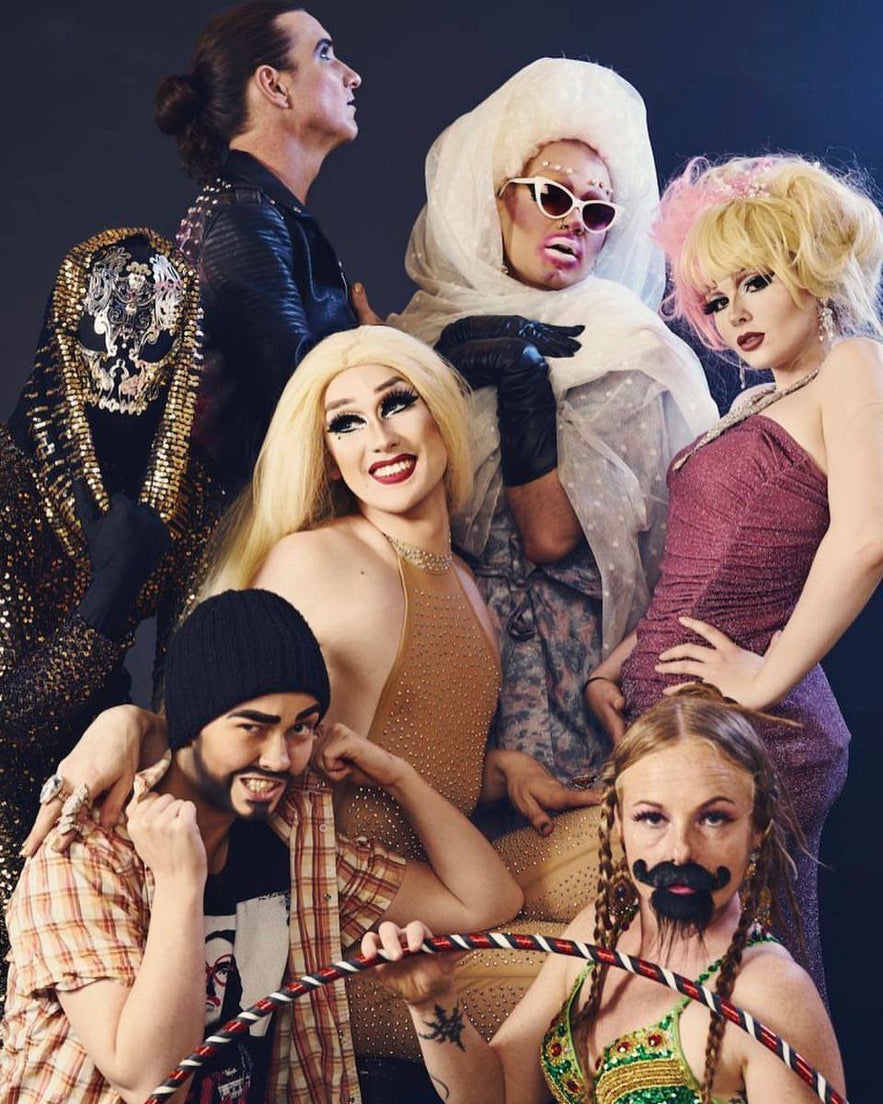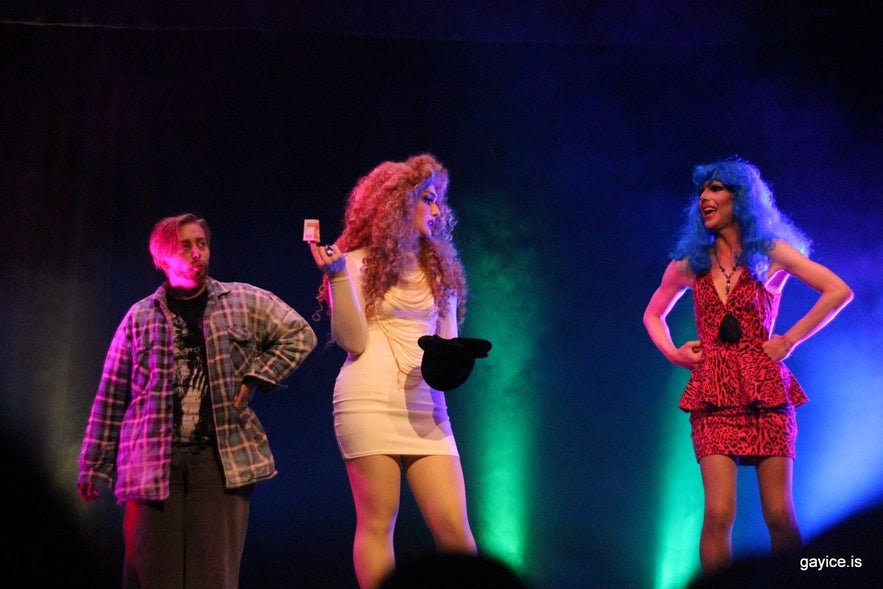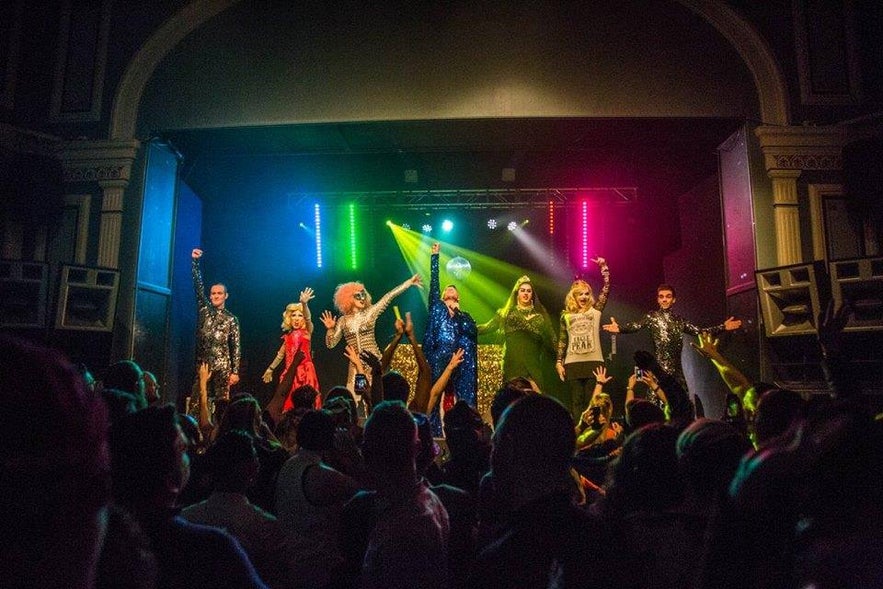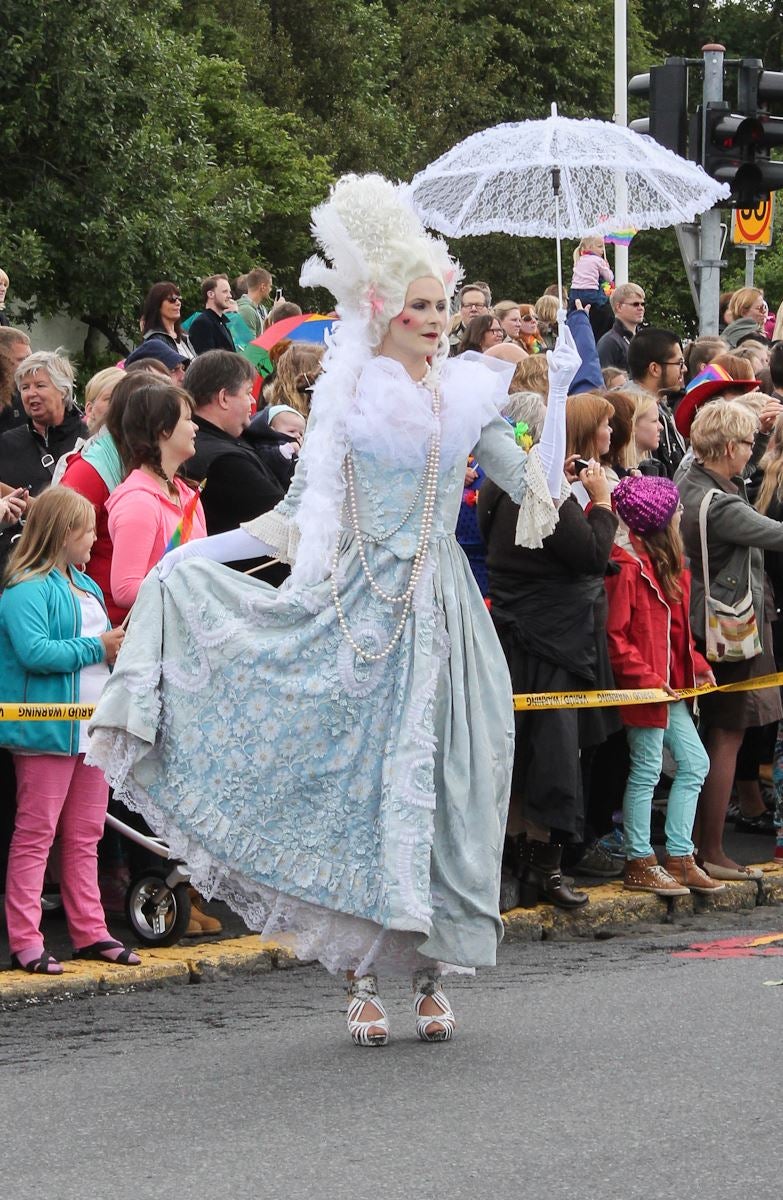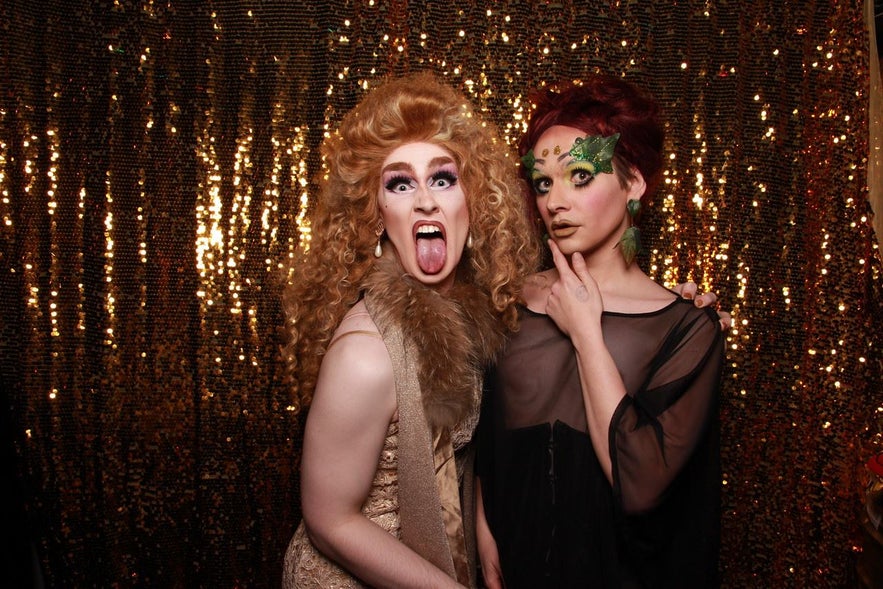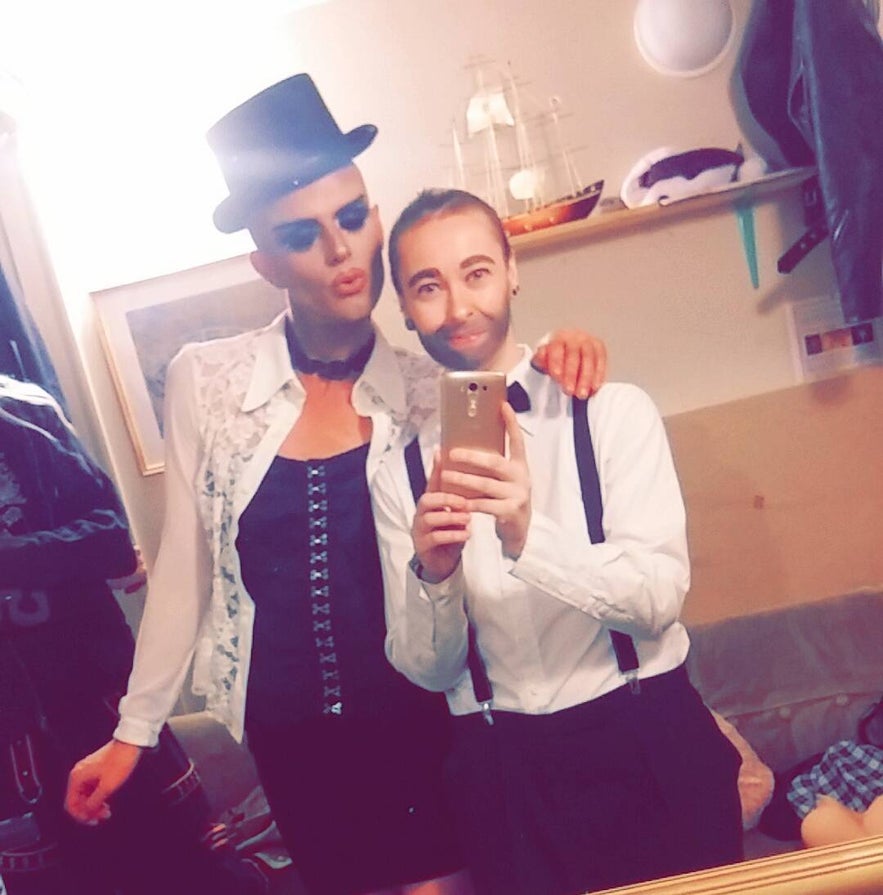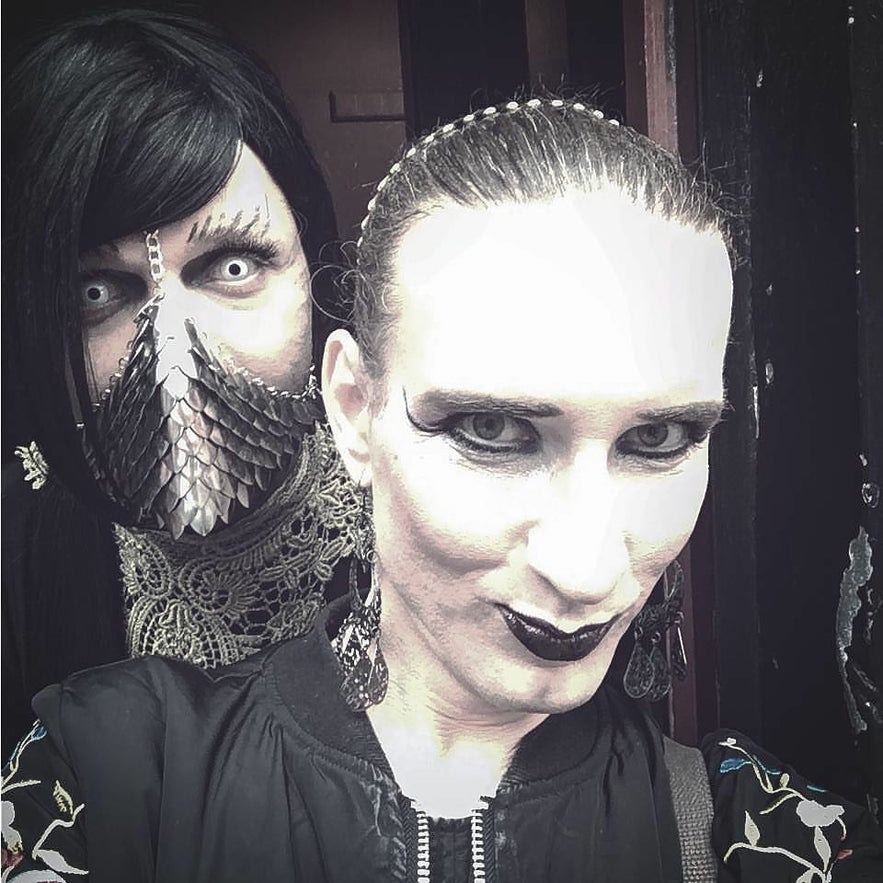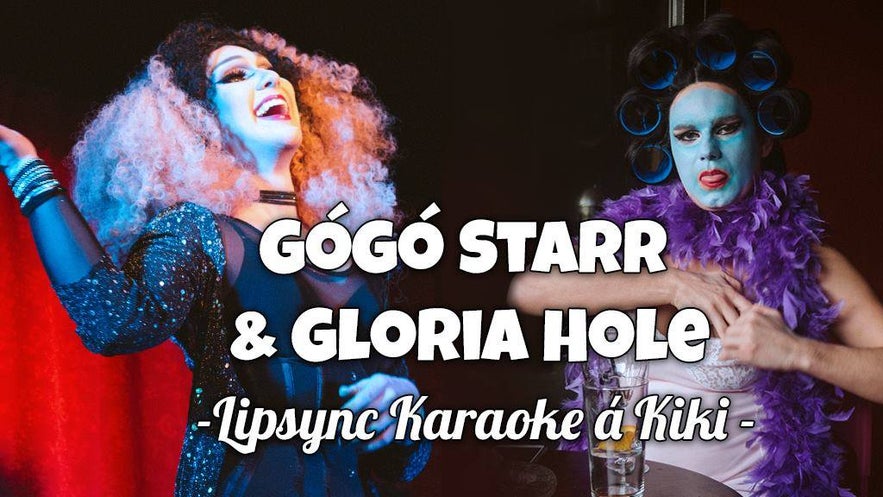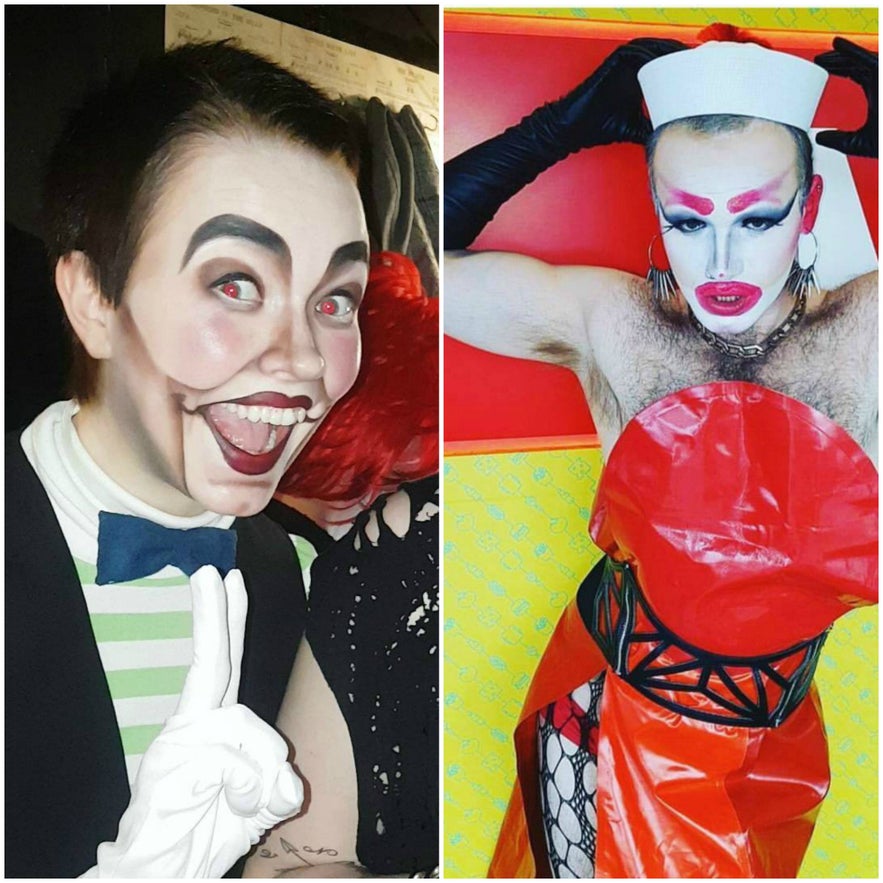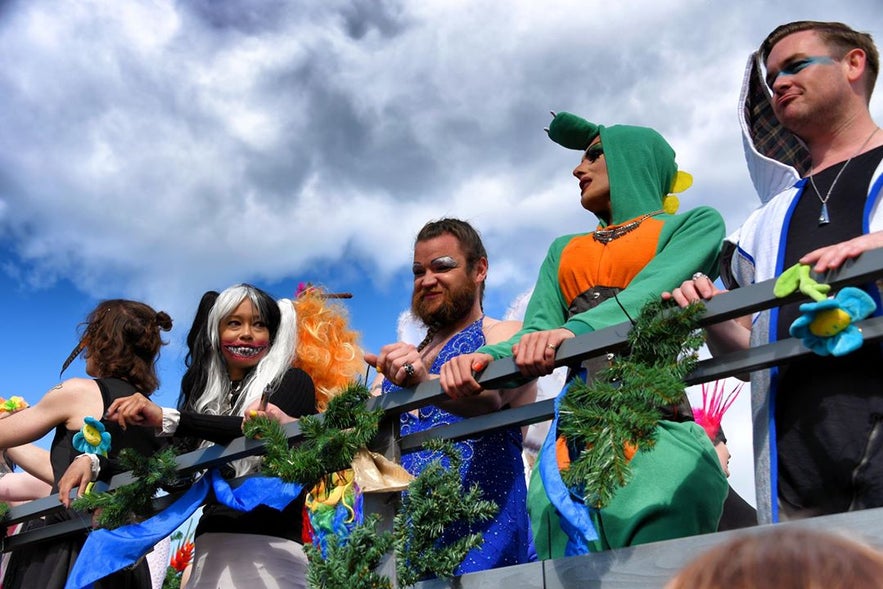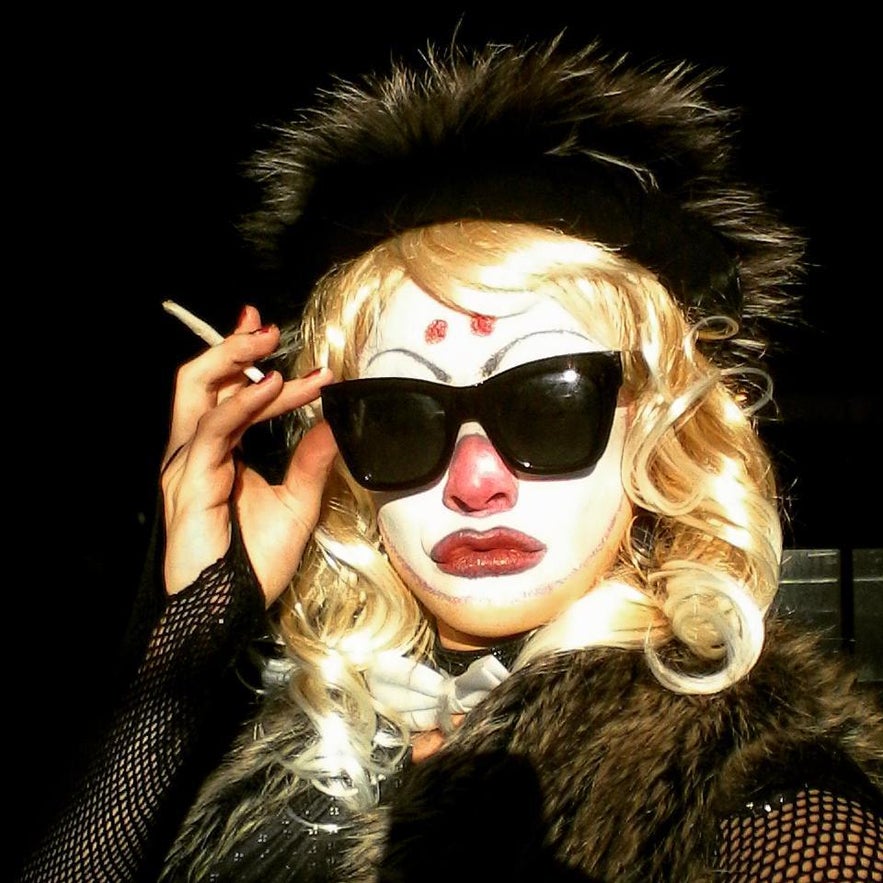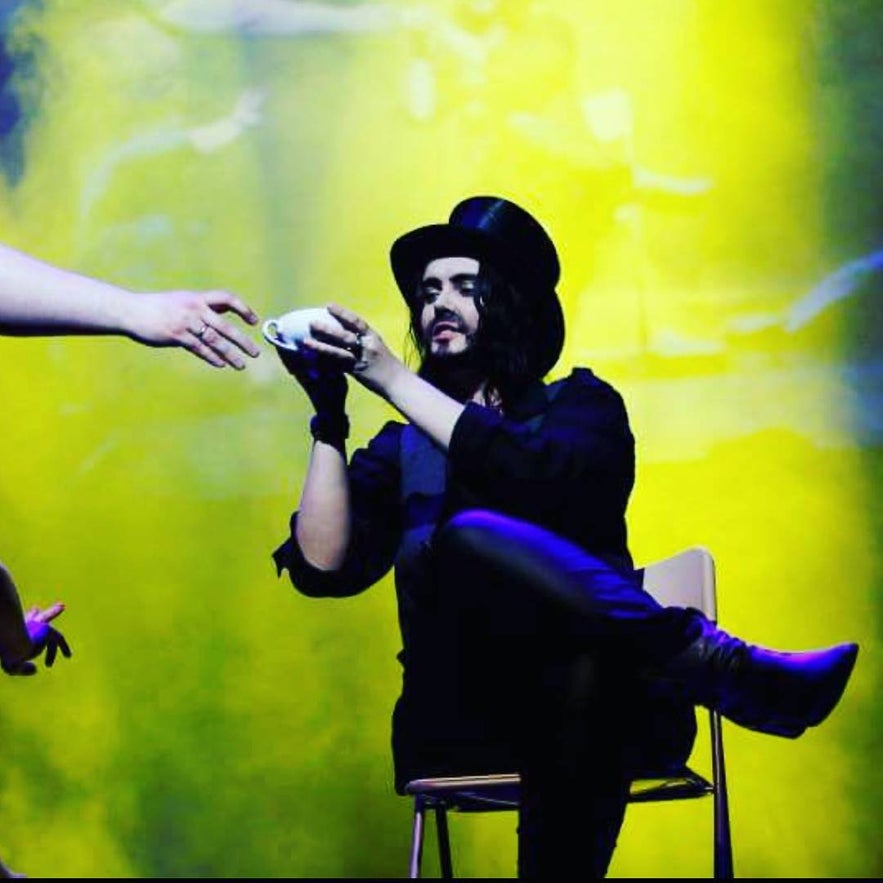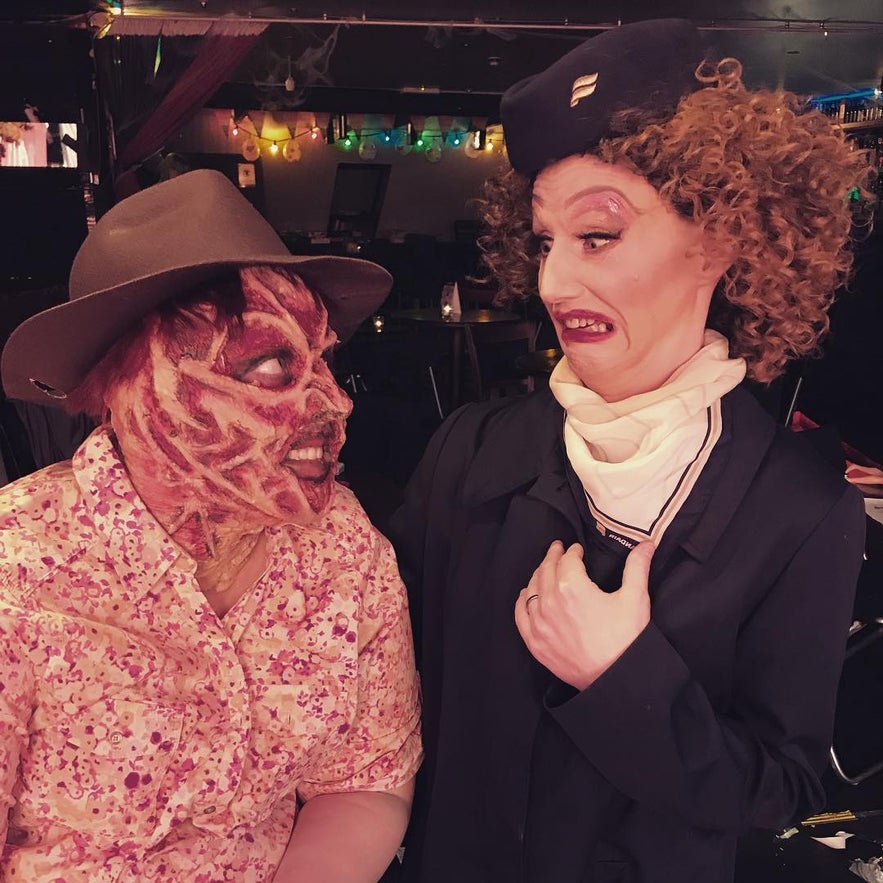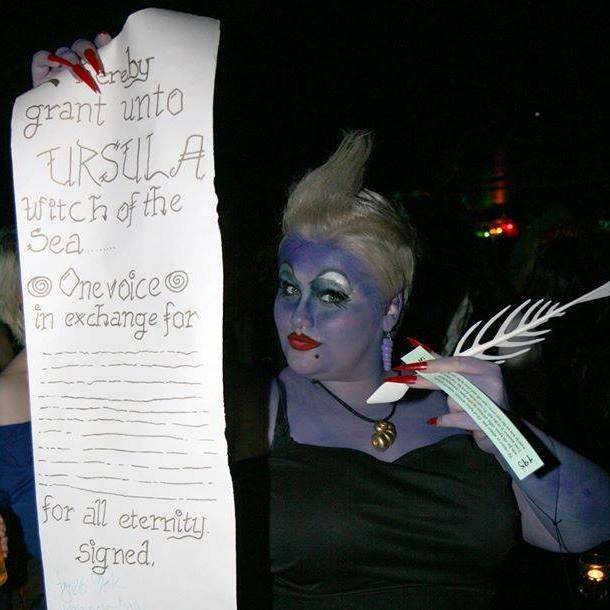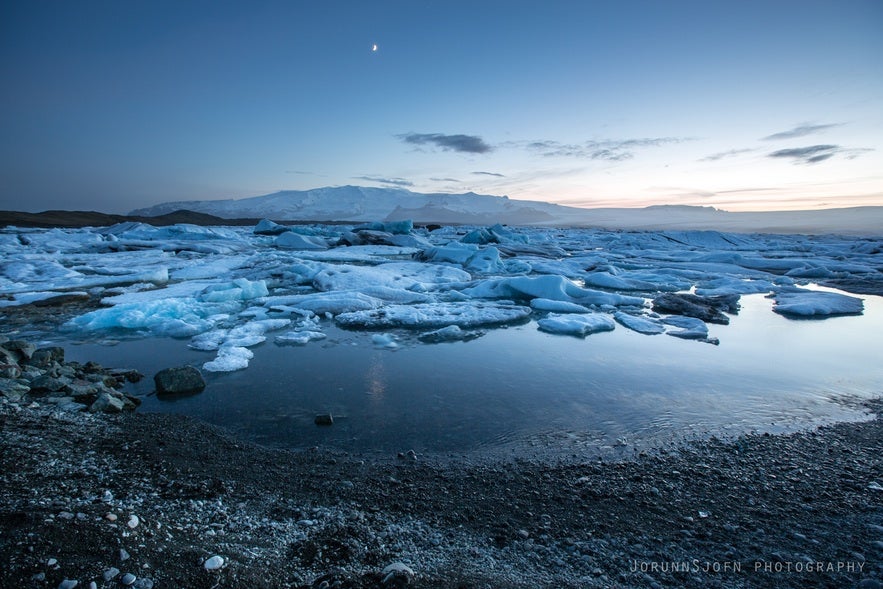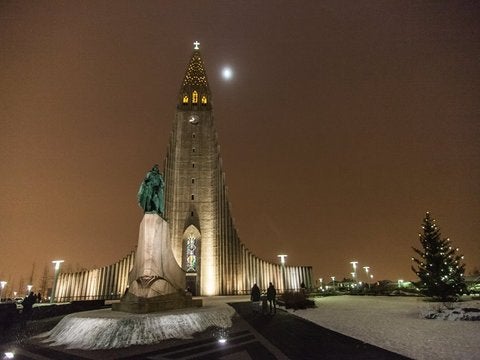With around three-hundred thousand people and a national style that revolves around a coarsely knitted woollen sweater, you could be forgiven for thinking that drag culture in Iceland would not have a big presence. If you were to be talking about Iceland three years ago, you would be correct.
Not any more.
Since 2015, drag in Iceland has exploded, and today, it is one of the most recognised cultural scenes in the country; it can barely even be described as ‘up-and-coming’ any more, based on its quick and notable success.
To help out a reader unfamiliar with drag culture, it is basically the presence of drag queens, drag kings and other performers who manipulate gender and use it as a form of entertainment and expression. Drag has existed in basically every society in some form throughout history, and in Iceland, it is undergoing a renaissance.
Drag in Iceland is far from the rigid stereotypes most known around the world, of larger-than-life, campy female impersonations done by a gay man. While that has its very welcome place here, the openness of Iceland’s community and the eagerness for dialogue on gender issues mean that queer-associated people of all backgrounds are finding unique and groundbreaking ways to put their twist on ‘drag’.
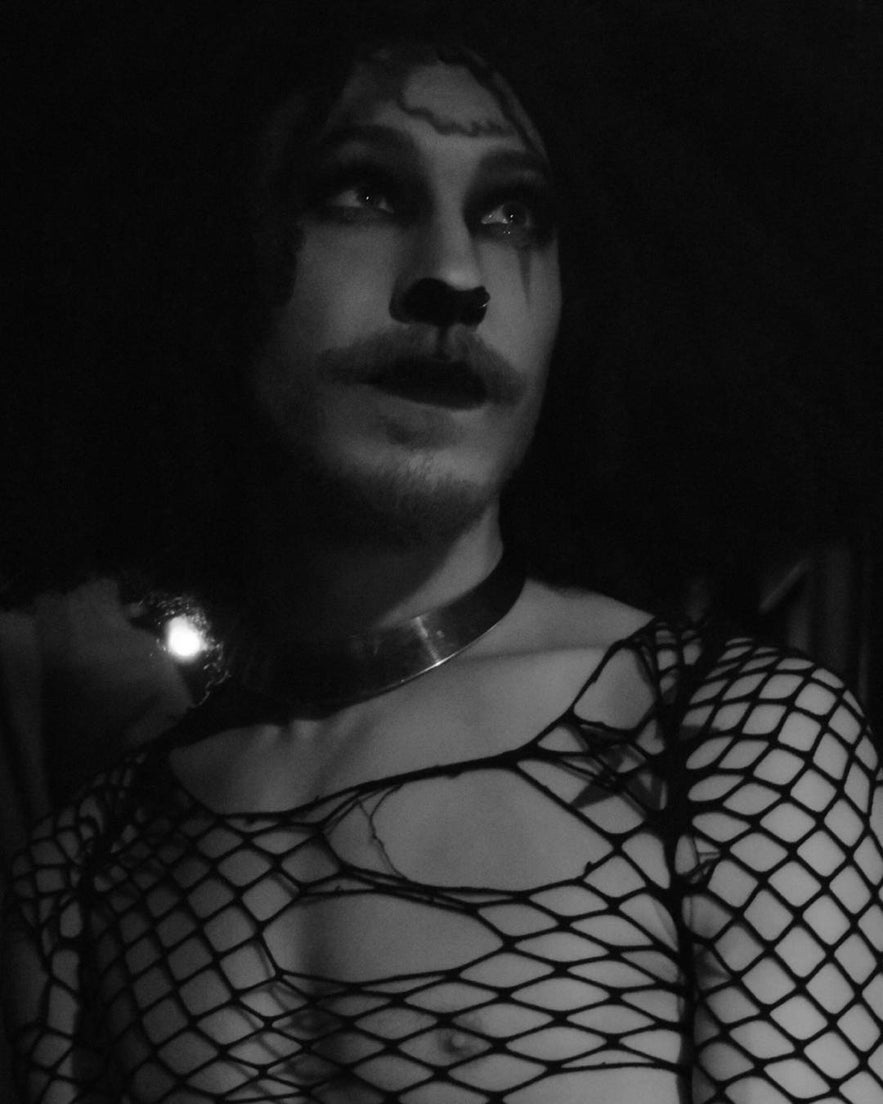
This renaissance is occurring around the world with the popular Emmy-award-winning reality television show ‘Rupaul’s Drag Race’, and it undoubtedly had a huge influence on Iceland. To say it is the only reason for the resurgence, however, is to ignore the hard work and talents of those who created Iceland’s interpretation of this culture, and to overlook a fascinating story.
- See also: Gay Iceland | All You Need to Know
The Rebirth of Drag in Iceland
Prior to the creation of the ever-growing queer-variety collective Drag-Súgur, which has fostered Iceland’s blooming drag culture, the only time you would usually see gender-bending performance was at the Drag Competition that occurred every Pride, in which the country would crown a reigning King and Queen. Though popular and well-loved, the rest of the year was more or less a vacuum when it came to drag.
There were occasional exceptions; since the 1980s, there have been short-lived spurts of a drag presence downtown, particularly from 1996-1999 and 2004-2006, when queens were touring and there were weekly shows.
Icelandic pop-icon Páll Oskar has also performed in drag from time to time, including with this impersonation of Dionne Warwick, which I think can most politely be described as ‘slightly dated’ (please bear in mind that this was in 1991, at a time where Iceland was much more isolated).
- See also: Paul Oscar | The King of Icelandic Pop
Unless drag was 'trending' at the time, however, the scene was virtually non-existent, and this was the case for nearly a decade after 2006.
Everything changed in 2015, when the newly crowned Drag Queen of Iceland, Gogo Starr, aka. Sigurður Guðjonsson, decided to do more with her title than previous winners. Alongside artist Hafsteinn Regínasson, otherwise known as Ragna Rök, and drag enthusiast Þórhallur Hafþórsson, Gogo co-created a ragtag group of kings, queens and queer artists, and decided to put on a show with Australian comedian Jono Duffy as host.
The group named itself ‘Drag-Súgur’, a play on words that means ‘house draft’ in Icelandic, based off the presumption that the group would be drifting around the city, performing in whatever corner they could beg their way into. The owners of the bar Gaukurinn, however, immediately stepped in and offered their stage, and though the name thus became a little defunct, a new drag scene in Iceland was born.
In November 2015, Drag-Súgur performed for the first time. Ever since, there has been a monthly show, and for the past year, shows have been sold out with queues outside the door. The timing was perfect, filling the space of the Drag Competition which died a natural death in 2016.
The Explosion of Drag in Iceland
Drag-Súgur has, in fact, become such an establishment that it has begun a second show - Drag-Lab - which newcomers are welcome to participate in, ran by Guide to Iceland’s queen of controversy Wanda Star and fabulous Drag King, Boytoy Tony. Though it has only run five times, its last shows were fully sold out.
Because of the success of Drag-Súgur, Drag Queens and Drag Kings have begun to appear more and more across the Icelandic media, in all forms. One of the largest breaks for the scene was when Gogo and several other artists were used in the restaurant Gló’s rebranding campaign, and featured in a television advert.
Bustravel, an Icelandic tour company, quickly followed suit, using the modelling of Drag Queen James the Creature.
During this period, Guide to Iceland hired the vitriolic, violent and vain Wanda Star to satirically critique Iceland as a tourist destination, and, more recently, its political controversies, to stir up conversation about the country.
Queer musicians who found their earliest stage with Drag Súgur also began to rocket to success, namely electro-queen and trans rights activist Skaði and the haunting and visually-extravagant Mighty Bear. Both had a dominant presence at this year’s Iceland Airwaves.
In the past year, the collective has also collaborated with or been featured in works by companies and establishments as diverse as the Grapevine, RUV, the Frettablaðið National News Network, Landsbankinn, Gríman (the Icelandic equivalent of the Tony Awards), Samtökin ‘78, Bíó Paradís and the rock band Atómstöðin for their newest music video ‘When in Rome’.
With Drag-Súgur generating surprising revenue for Gaukurinn, other establishments have begun to open their stages for drag performers. Loft Hostel and Bar, for example, regularly brings in successful Drag Queens from abroad, including iconic figures such as the UK’s Krystal Lubricunt, the legendary Meth, and Australia’s Shea den Freude. Loft recruits local talent to support these acts.
The Reykjavík Kabarett, which began in the same year as Drag Súgur and has taken off to a similar degree, has begun to include drag acts into its shows in the basement of the National Theatre and other venues. The more recent, but very popular, quarterly Poetry Brothel, co-run by Guide to Iceland's Nanna, has also featured many drag artists.
Charity events, such as the sexual health movement ‘Get Your Smokk On’, have also used gender-bending performers in their fundraisers to raise money for HIV prevention, treatment and awareness, including in an event at Harpa.
- See also: Culture and Culture Tours in Reykjavík
The one official ‘gay bar’ in Iceland, Kiki, has also developed an increasing drag presence. Gogo Starr and previous Drag Queen of Iceland Gloria Hole have started a ‘lipsync karaoke’, for example, which runs on Sundays.
Gloria Hole also runs her own shows here on occasion, performing without respite for hours at a time. She has also represented Icelandic drag abroad, and in unlikely places within the country, such as the otherwise (forgive me) mundane town of Kópavogur.
Speaking of drag outside Reykjavík, Drag-Súgur pumped life into Akureyri’s scene by bringing the Reykjavík talent to their competition. Turner Strait and Deff Starr are the reigning king and queen of the North respectively.
- Find tours from Akureyri here
Drag in Iceland is thus now a year-round phenomenon, and increasing its presence all around the country. Of course, however, Reykjavík Pride in August is still by far the biggest event in the drag calendar.
Drag-Súgur organises its own great float, which, due to Páll Oskar’s absence from the celebrations this year, became the feature piece of the parade; performers with the time and resources have also organised their own floats independently, and it is the only time of the year that the Thai drag community can be seen out in full force.
- See also: The Top 10 Festivals in Iceland
Drag-Súgur also has its largest extravaganza show at this time, which thus far has been held in the historic Iðnó. This year, it sold out online within mere hours, driving the group to aspire to even greater heights next year.
With approximately twenty regular performers who circulate, different groups have begun to sprout up within Drag-Súgur and the wider community, representing the diversity of outlooks and style. In Iceland now, there are even different Houses of Drag, as per American ballroom and pageant tradition, such as the House of Starr, under Gogo, and the House of Strike, under drag veteran and sex kitten, Pixy Strike.
The renaissance of drag in Iceland would not be possible without those fascinated in the culture with the abilities to document it from a unique perspective. Photographer Kaspars Bekeris has begun to gain an international reputation for his ‘F*CK GENDER’ collection, which was, and partially still is, exhibited in Gaukurinn and now is used in almost everything published about the scene here.
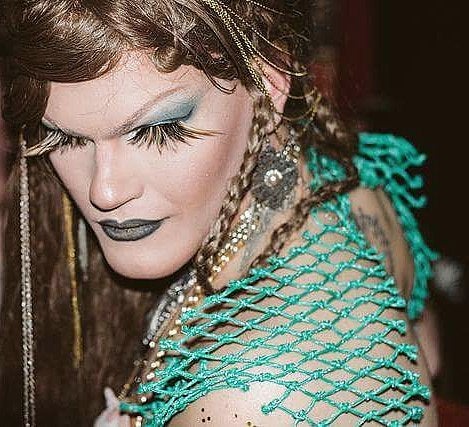
Other photographers, such as Junia Lif, Inga Sör and Dottir Management, have also increased their portfolios and drag culture’s visibility by documenting the performers. Their images tell the stories of the shows and the interactions of the artists with the audience, while the works of Bekeris focus more on the backstage and craft of drag, the relationship between the performer and their art.
- See also: Photography in Iceland
The Future of Drag in Iceland

The future of drag in Iceland seems to be on a rather predictable trajectory: onwards and upwards. As more and more people are seeing the artistry, progressive messages, and sheer talents of drag performers, more and more companies are seeing potential in utilising drag performers to represent them and sell their products.
This means more opportunities for the artists, and more visibility for the community.
Some would argue that this will have a negative effect on drag, that if it becomes commercial it will lose its radical, anti-establishment agenda of mocking patriarchy, deconstructing gender roles, and dominating the dialogue on inequality and injustice. The drag performers of Iceland, however, tend to hold these ideals as absolute, and it could be equally argued that more visibility means a louder voice on the issues.
As Drag-Súgur co-creator Ragna Rök says, ‘there was no space before for queer people who did not want to live a heteronormative life, and had no outlet for self-expression’. With Drag-Súgur on the scene, people are learning to love the artistic results that come from living life as an ‘other’ and a person with ideals that aspire to a different lifestyle than is considered normal and expected. As they appreciate the art, they better understand the artist.
Svanhildur Sif, a fellow writer at Guide to Iceland, agrees, and she speaks from a place of authority. She was 2014’s King of Iceland, created and manages Drag-Súgur’s website, and is a beloved performer under the pseudonym Russell Brund.
Russell claims that with the success of the shows, ‘you can barely go out of the house without bumping into someone in drag’, whereas before, ‘you would never see drag performers again until the next year’. Something they would like to see with the future of drag in Iceland, though, is a greater appreciation of the kings.
While, undoubtedly, Rupaul’s Drag Race, being a space for men and trans-women performing as Queens, is part of the reason why drag kings are sidelined, the larger cause is undoubtedly the patriarchy that drag seeks to undermine. As Svaný says ‘girls are used to being overlooked… is something we’ve heard all of our lives, so we are used to it’.
Although she concedes that kings tend to lack ‘the ridiculously high heels, glitter, glamour, makeup’ which draw people to queens, she notes that drag is all about changing conceptions and experimenting with new ideas, to provide a role model for those finding their voices.
Regarding women aspiring to do drag, Svaný says, ‘I want to show them (and the world) that kings are not boring. Kings don’t have to wear flannel, they can have glitter and glamour. I even wear high heels on stage, I strip to my boxers just like the queens strip to their underwear’.
The fight to see a more rounded queer representation in Iceland through the medium of drag thus clearly continues to contend with sexism. After all, elevating the art of a drag queen above a drag king in spite of equal effort and talent is still elevating the work of what is usually a man above what is usually a woman, regardless of who is ‘wearing the dress’.
- See also: Gender Equality in Iceland
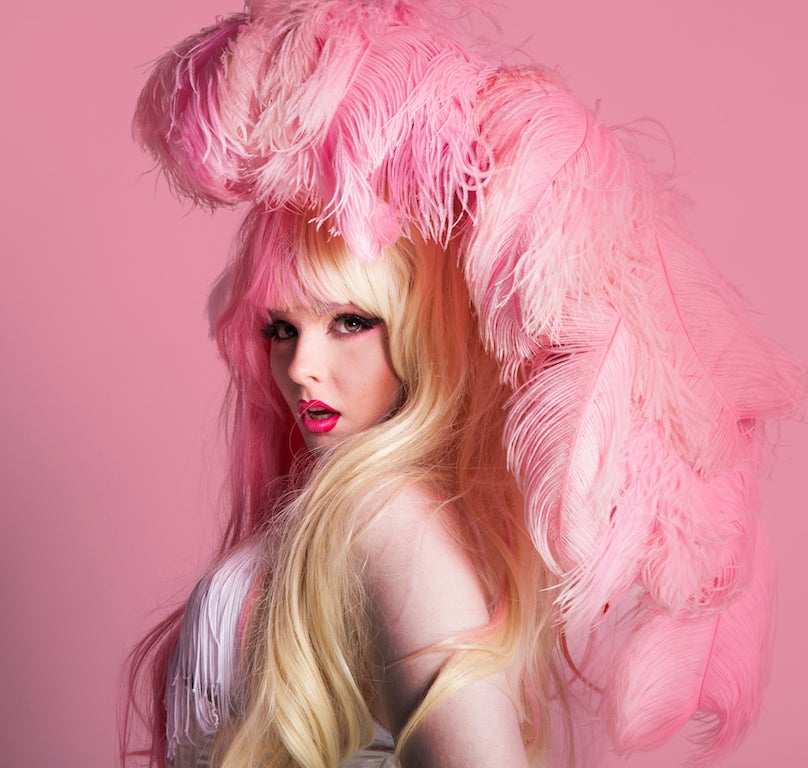
Kristrún Hrafns, a female Drag Queen by the name of Jenny Purr, has broken conventional stereotypes about drag with her radical transformation and killer performances. In spite of her heels being as high, her makeup as heavy, her corset as tight and her hair as voluminous as any male drag queen, she has still contended with not being taken as seriously.
In spite of this, her advice to interested women is that ‘it will be quite challenging, might even be scary, but it's so much fun to embrace your creativity and your femininity’.
Boytoy Tony, who is just around a year-old, has some more general advice for new ‘royalty’, as they are nicknamed: ‘the audience love to see newcomers… they like to see how the character develops and feel like they are part of the performer’.
Regarding the kings, he says that ‘we are not as respected at the queens… but the kings have a strong brotherhood and with our enthusiasm, we will be more noticed in the culture’.

To conclude, there is no community through which we could better expect this change to occur; after all, drag performers have been the harbingers of change throughout history.
A drag queen threw the first bottle at Stonewall against the police, starting a global movement that liberated queer people throughout the west and further (regardless of what that awful whitewashing movie depicts). Drag artists have more widely introduced the world to issues such as transgenderism and general open-mindedness regarding gender. They have also redefined the 'gay image' from one of 'seediness' and underground behaviour to one of colour and celebration.

Perhaps most importantly of all, drag artists in more oppressive, theocratic countries have dared taking to the streets in full regalia to help shift the dialogue away from ‘othering’, and towards inclusion. In places such as Uganda, where anti-gay killings are basically sanctioned (largely to do with American Conservatives indoctrinating far more people than gays ever have), it shows just how revolutionary drag culture is.
If our brothers, sisters and siblings in between have managed these feats, and continue to push for justice in such hostile places, the drag presence here will easily help the already progressive Iceland towards a greater acceptance of women and queer culture.
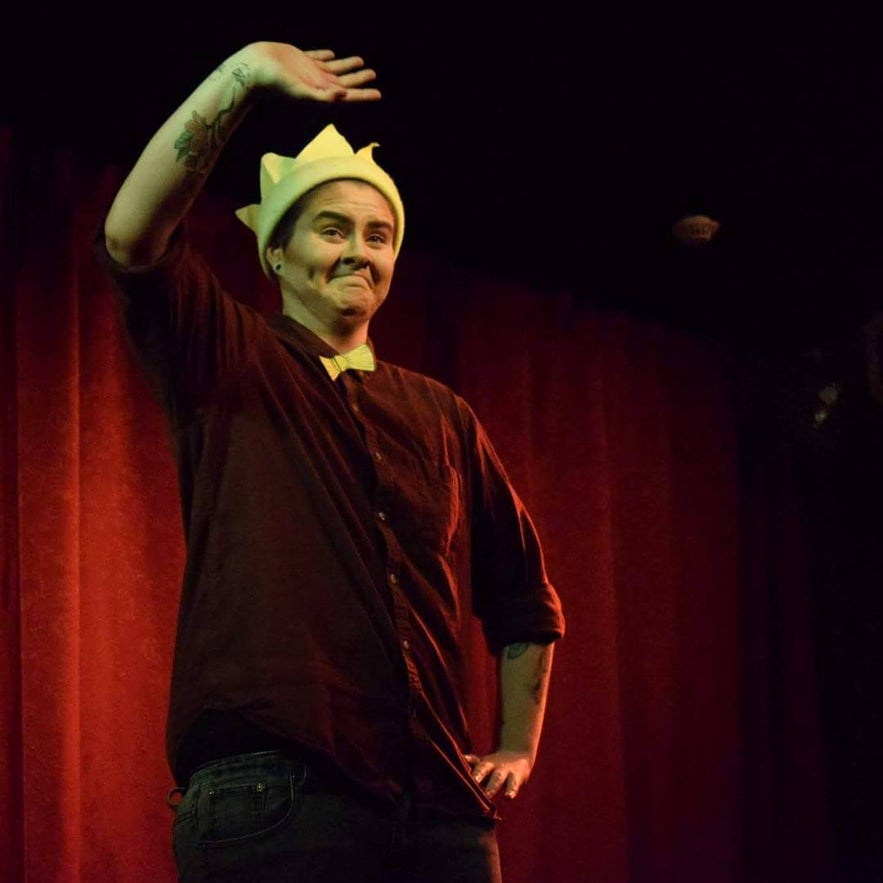
In the words of Gogo Starr, 'Queens and Kings of all kinds are working together to make this fabulous entertainment and a diverse and inclusive scene. F*ck gender, enjoy it and have fun!'
Guide to Iceland’s Wanda Star was reached out for comment, and replied with the emoticons of an eggplant, peach, and a question mark.
Friends and colleagues confirm her opinion would have had little value regardless. Find out why here.


